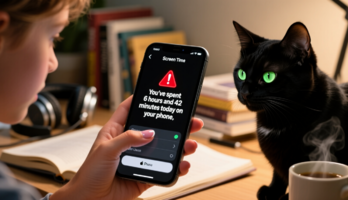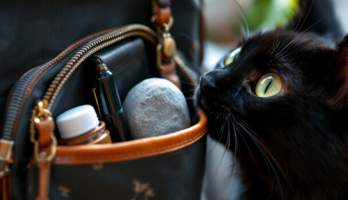Richard Leach - Fundamental prinsiples of engineering nanometrology (778895), страница 36
Текст из файла (страница 36)
Theseinclude:-the surface is relatively smooth (l >> 4pRq);-most of the light is scattered around the specular direction;153154C H A P T ER 6 : Surface topography measurement instrumentationFIGURE 6.27 Integrating sphere for measuring TIS.-scattering originates solely at the top surface, and is not attributable tomaterial inhomogeneity or multilayer coatings;-the surface is clean.TIS instruments are calibrated by using a diffusing standard usually madefrom white diffusing material (material with a Lambertian scattering distribution) [103].When comparing the Rq value from a TIS instrument to that measuredusing a stylus instrument, or one of the optical instruments described insections 6.7.2 and 6.7.3, it is important to understand the bandwidth limitations of the instruments.
The bandwidth limitations of the TIS instrumentwill be determined by the geometry of the collection and detection optics (andultimately by the wavelength of the source) [104]. TIS instruments canmeasure Rq values that range from a few nanometres to a few micrometres(depending on the source).
Their lateral resolution is diffraction limited, butoften the above bandwidth limits will determine the lower spatial wavelengths that can be sampled.Another scattering method that is commercially available is angleresolved scatter (ARS) [97,105,106]. However, ARS methods tend to be morecomplicated than TIS and the theory relating the ARS to a surface roughnessCapacitive instrumentsparameter is not so clear. Basically, the angular distribution of the scatteredlight is measured either using a goniophotometer-type instrument ora dedicated scatterometer (see [98] for examples).
The angular distribution ofthe scattered light can be expressed as the product of an optical factor anda surface factor. The optical factor can be calculated from the illuminatingwavelength, the angles of incidence and scattering, the material properties ofthe surface, and the polarization of the incident and scattered beams. Thesurface factor is called the power spectral density (PSD) function and isa function of the surface roughness.
From the PSD quantitative values for theheight and spatial wavelength distributions can be obtained, although a gooda priori model of the surface is required for accurate measurements. It is alsopossible to extract the BRDF from ARS data. The range and resolution of ARSinstruments are very similar to those for TIS instruments. As with TISinstruments, ARS instruments do not measure the actual surface topography, but measure some aspect of the height and spatial wavelengthdistributions. For this reason ARS instruments are usually employed whereprocess change needs to be monitored.TIS and ARS instruments are limited in the range of heights that they canmeasure.
With visible illumination the heights are usually limited to 100 nmor less. The use of infrared illumination sources can increase this range limit.However, to employ scattering to measure larger surface heights, it is morecommon to use correlation methods, for example the use of laser speckle[107]. Such techniques will not be discussed here, as they are not common tosurfaces encountered in MNT applications.6.8 Capacitive instrumentsThe use of capacitance [108,109] to measure surface texture has been aroundfor about as long as stylus methods. A conducting plate is held over (or moreusually mounted on) a conducting sample to be measured [7]. The capacitance between the plates is a function of the effective plate area, the separation of the plates and the dielectric constant of the medium between them(usually air) [110]. The mean capacitance will change with changes in surfacetexture as the top plate is scanned over the surface.
Surface form can causeserious problems when using capacitance instruments to measure surfacetexture and, because the capacitance is related to the inverse of the surfacetexture, large peaks will be weighted differently to valleys.Note that the configuration described above is usually used to measureproximity (see section 5.3). Capacitance instruments for measuring surfacetexture can have significant problems and are difficult to calibrate.
They are155156C H A P T ER 6 : Surface topography measurement instrumentationrarely used nowadays and do not find many applications in the MNT area.However, the scanning capacitance microscope is used extensively in manyMNT applications.6.9 Pneumatic instrumentsPneumatic gauging has been around for many years. Basically an air flow isinput to the surface by means of a hollow nozzle and the back pressuregenerated in the nozzle chamber is measured. This gives rise to a non-linearrelationship between surface texture and back pressure, but a linear regionexists over a restricted range [111]. The axial resolution can be less than 1 mmand the lateral resolution is limited to the nozzle diameter (usually muchgreater than 1 mm). Pneumatic gauging can be very fast and is self-purging,which is useful for on-line processes.
It is not used extensively for MNTapplications.6.10 Calibration of surface topography measuringinstrumentsCalibration and traceability for surface texture measuring instruments isa subject area that has received a great deal of attention in the past centuryand is still an active area of research. There are many unsolved problems andit is still impossible to calibrate a given surface texture measuring instrumentfor all surface types (this may well always be the case). The complex interaction of the probe with the surface being measured and the vast range ofpossible surface types confound the problem.
This is especially true foroptical instruments – it is non-trivial, but possible to calculate the trajectoryof a spherical stylus as it traverses a surface, but it is much more difficult tocalculate the interaction of an electromagnetic wave with a surface. Also,there is vast array of surface texture parameters and characterizationmethods (see chapter 8) with varying degrees of complexity. For example,there has been little attempt to calculate the uncertainty associated withareal feature parameters (see section 8.3.7). The following sectionssummarize the current state of the art in the area of calibration andtraceability.6.10.1 Traceability of surface topography measurementsTraceability of surface topography measuring instruments can be split intotwo parts.
Firstly, there is the traceability of the instruments and, secondly,Calibration of surface topography measuring instrumentsthe traceability of the analysis algorithms and parameter calculations.Instrument traceability is achieved by calibrating the axes of operation of theinstrument, usually using calibration artefacts (referred to as materialmeasures in ISO standards). In some instances, it may also be possible tocalibrate an instrument using a range of instrumentation to measure thevarious characteristics of the instrument, although this is a time-consumingprocess that is only usually required by NMIs [112].
Calibration artefacts areavailable in a range of forms for both profile and areal calibration, buta primary instrument must calibrate them. Primary instruments are usuallykept at the NMIs and can be stylus (for example [113]) or optical (for example[114]) based. Most primary instrumentation achieves traceability by usinginterferometers that are traceable to the definition of the metre via a lasersource (see section 2.9).Traceability of profile measuring instruments has been available now formany years, although it is still common to consider an instrument calibratedwhen only a single step height artefact has been measured – a dangerousassumption when using the instrument to measure both height and lateraldimensions, or when measuring surface texture parameters (see section6.10.2).
Traceability for areal instruments is still in its infancy and there areonly a small number of NMIs that can offer an areal traceability service (see[113,115]).An important aspect of traceability is the measurement uncertainty of theprimary instrument and the instrument being calibrated. Rigorous uncertainty analyses are usually carried out by the NMIs (see for example [116–118]), but are surprisingly rare in industry for profile measurement usinga stylus instrument and almost non-existent for areal measurements, especially when using an optical instrument [119].Traceability for parameter calculations can be carried out by using calibrated artefacts that have associated parameters, for example the type Dartefacts (see section 6.10.2) used for calibrating profile measuring instruments.
However, the parameter calculations themselves should be verifiedusing software measurement standards (see section 6.13), and for the calibrated artefact an uncertainty calculation has to be made by those institutions that can calibrate these standards.6.10.2 Calibration of profile measuring instrumentsISO 5436 part 1 [120] describes five types of artefacts that are used to calibrate the characteristics of profile measuring stylus instruments.
Opticalinstruments are not covered in ISO 5436 part 1 but many of the artefactsdescribed can be adapted to calibrate optical instruments in profile mode.157158C H A P T ER 6 : Surface topography measurement instrumentationMany groups have developed profile calibration artefacts that are availablecommercially (see [114] for a review). The use of the five types of profilecalibration artefacts is presented in detail in [1] and they are summarizedhere ([1] also presents the analysis methods for the various artefacts). Somegroups have developed dynamic techniques for calibrating the vertical characteristics of stylus instruments by using a vibrating platform to simulate thespatial frequencies on a surface, but such methods are not used extensively inindustry (see [112] and [121]).ISO 12179 [122] describes the methodologies to be applied when calibrating a surface texture measuring instrument such as the need for repeatmeasurements, general instrument set-up and what to include on a calibration certificate.
















